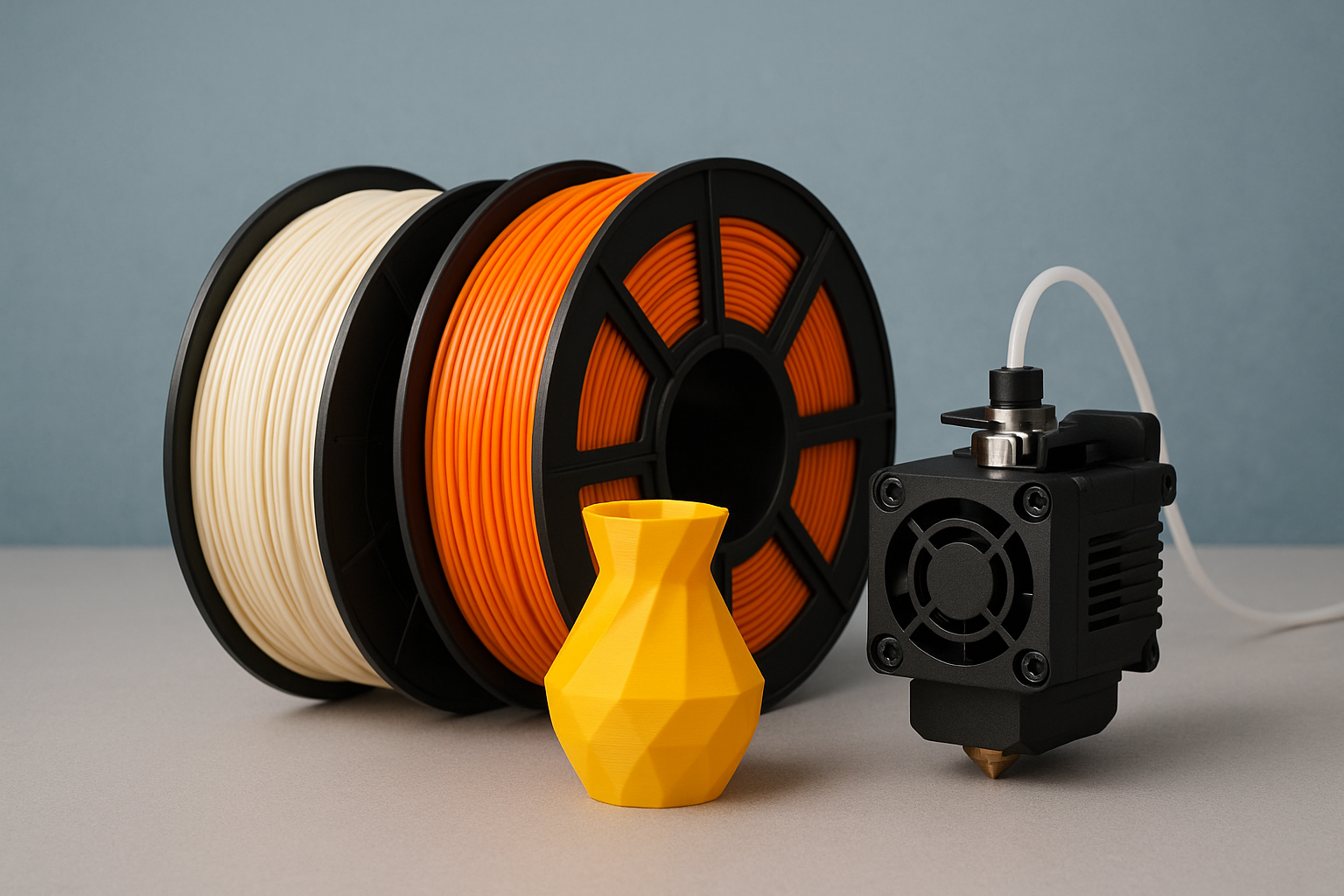3D printing has evolved from a niche hobby to an essential tool in manufacturing, prototyping, and even education. At the heart of this innovation lies the choice of filament. Two of the most commonly used types are PLA 3D printing filament and PLA+ filament. But what’s the difference, and how do you choose the right one?
In this guide, we’ll break down what PLA and PLA+ are, how they differ, and why they're ideal for beginners and professionals alike.
What is PLA 3D Printing Filament?
PLA (Polylactic Acid) is a biodegradable thermoplastic derived from renewable resources like corn starch or sugarcane. It’s one of the most popular materials in the 3D printing community, and for good reason:
-
Easy to print with: PLA has a lower melting point and doesn’t require a heated bed.
-
Minimal warping: Ideal for printing detailed objects without deformation.
-
Eco-friendly: Derived from natural materials, making it a sustainable choice.
If you're looking to purchase quality PLA printing filament, you can explore a wide range of colors and spools available on 3DMeta's PLA filament collection.
What is PLA+ Filament?
PLA+ (or PLA Plus) is an enhanced version of standard PLA. Manufacturers tweak the base formula with additives to improve specific properties such as strength, durability, and flexibility.
Key benefits of PLA+ 3D printing filament include:
-
Improved mechanical strength: PLA+ is more durable and impact-resistant.
-
Higher temperature tolerance: Slightly better resistance to heat compared to regular PLA.
-
Smoother surface finish: Often results in shinier and more professional-looking prints.
Check out the high-performance PLA+ filament options from 3DMeta for superior results in your projects.
| Feature | PLA | PLA+ |
|---|---|---|
| Printability | Beginner-friendly | Beginner-friendly |
| Durability | Moderate | High |
| Flexibility | Brittle under stress | More flexible |
| Surface Finish | Matte or semi-gloss | Glossy and smooth |
| Temperature Resistance | Lower | Slightly higher |
| Eco-Friendliness | Biodegradable | Depends on additives |
While both materials offer excellent print quality, PLA+ filament is often preferred for functional parts or prints that require extra strength and resistance.
When Should You Use PLA or PLA+?
Use PLA if:
-
You’re a beginner and just starting with 3D printing.
-
You’re creating prototypes, decorative items, or non-functional models.
-
You want to prioritise environmental sustainability.
Use PLA+ if:
-
You need stronger, more impact-resistant parts.
-
You’re printing items that may be exposed to mechanical stress.
-
You want a smoother, more refined print finish.
Tips for Printing with PLA and PLA+
-
Recommended Nozzle Temperature: 190–220°C for PLA, 200–230°C for PLA+.
-
Bed Temperature: PLA may not need a heated bed; PLA+ performs better with a bed temperature of 50–60°C.
-
Storage: Both PLA and PLA+ are hygroscopic—store in a dry, airtight container to maintain performance.
-
Speed and Cooling: Print slower for better detail and use active cooling for improved surface finish.
Why Buy from 3DMeta?
Whether you’re looking for standard PLA printing filament or advanced PLA+ 3D printing filament, 3DMeta offers:
-
High-quality, moisture-resistant packaging
-
Wide range of vibrant colors and sizes
-
Excellent customer support and fast shipping across Australia
Explore the full range
Final Thoughts
Choosing between PLA and PLA+ depends on your specific project needs. For general prints and prototypes, PLA filament offers excellent ease of use and eco-friendliness. For more demanding applications, PLA+ 3D printing filament provides added durability and visual quality.
No matter your choice, starting with a trusted supplier like 3DMeta ensures you're getting premium materials designed for consistent and reliable printing.

